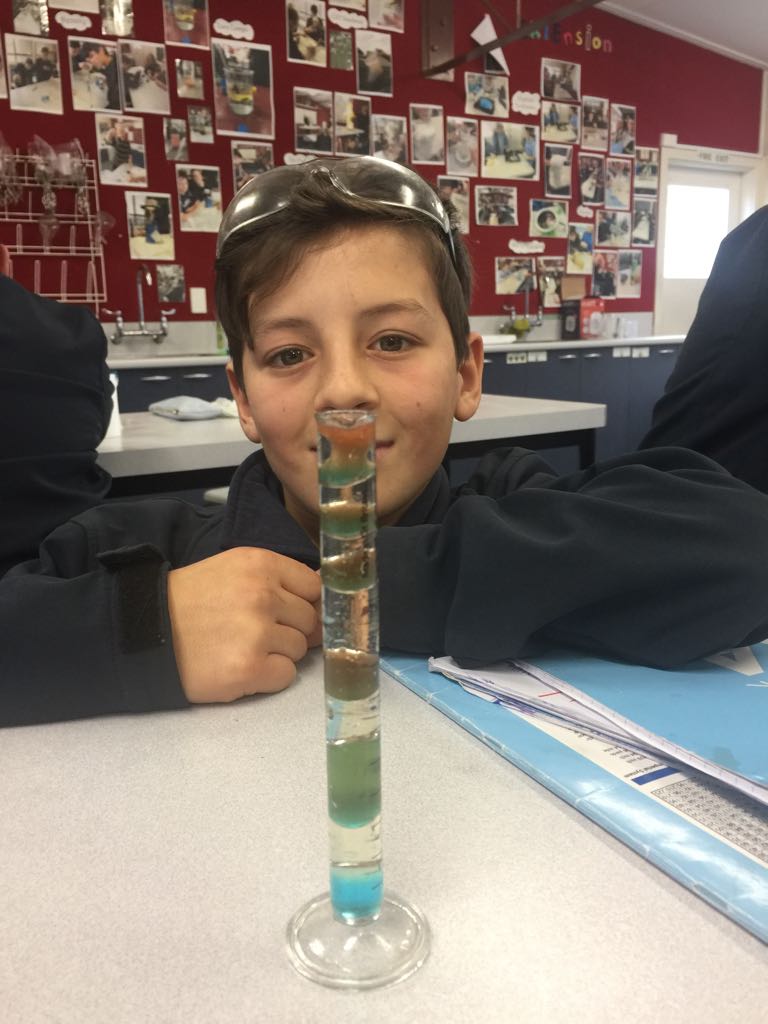One of our basic learning activities is to measure the density of liquids. We use small balances that we can buy off the internet for a few dollars and 10 mL measuring cylinders. Typically the activity starts with a discussion of floating and sinking (sometimes using a helium balloon and liquid nitrogen to change it’s density) and then arrives at the question what is density. In simple terms we talk about ‘how much something weighs for it’s size’ (we use mass and volume but sometimes have to over simplify-apologies to the physicists).
To allow comparison between liquids we control the volume, so the kids measure 10 mL of each liquid. Water (green food dye), canola oil, methanol (red food dye) and saturated copper sulfate solution.
This video shows it a class at Tahuna Intermediate, Dunedin (for this class we also included hexane as a, short lived, experiment).
Quite often we allow the lesson to run after the stage in the video and set a challenge to create as many layers as possible (mixing methanol and water/copper sulfate creates a layer with new density).
The most we have ever seen in 10 years of doing this experiment is 15 layers, keeping layers of water and methanol (and copper sulfate) separated with layers of oil. The narrow 10 mL measuring cylinders are important to keep the layers separate.



Recent comments